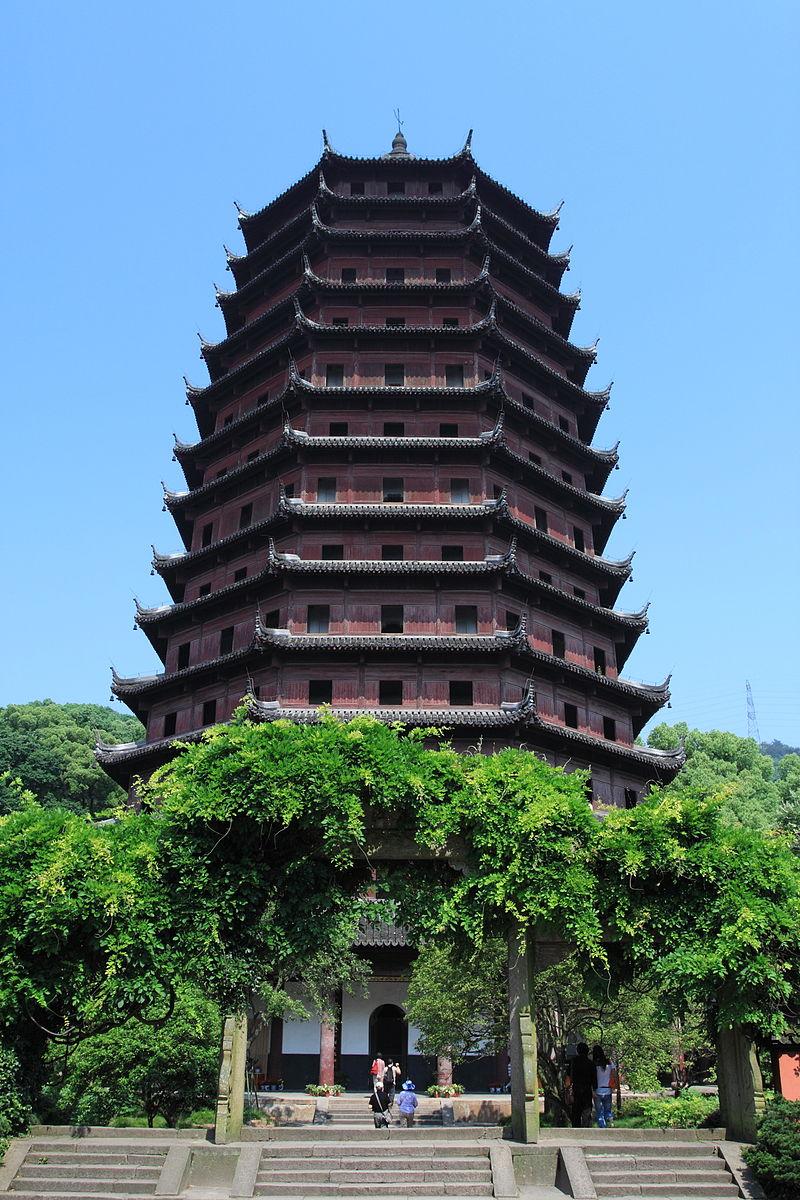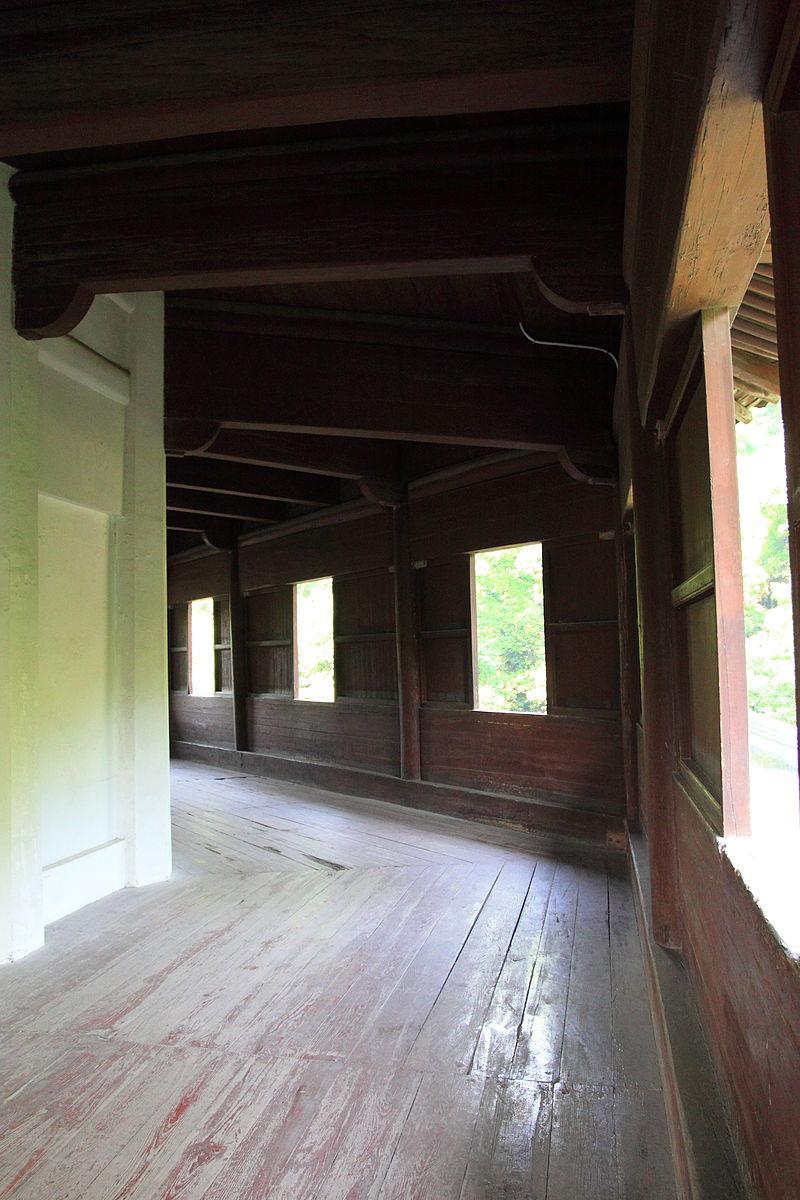7.11: Song Dynasty Six Harmonies Pagoda (970 CE)
- Page ID
- 31856
The Six Harmonies Pagoda (7.53), located on a hill overlooking the Qiantang River and Xi Hu Lake in eastern China, was constructed by the Northern Song Dynasty from brick and wood in 970 CE. The name ‘Liuhe” derived from the six Buddhist harmonies: heaven, earth, east, west, north and south and according to mythology, the purpose of the original building was a tribute to the six harmonies as a plea to tame the tidal water of the river and its floods.


The pagoda has been reconstructed many times in the last 1000 years, the present-day tower modified in 1156 CE, and standing 59 meters high. From the outside, there appear to be 13 stories; however, inside, there are only seven stories. One of the taller pagodas in China, the layout is an octagon representing the Buddhist belief of the Eightfold Path. The pagoda is divided into four parts, a thick wall outside and an inner ring and hallway (7.54) forming the interior rooms. The interior rooms of the pagoda were built with bricks from the earlier Song Dynasty, even in the twelfth century, recycling was practiced.
The noble eightfold path leads to the discovery of self-awakening
In-between the outer and inner walls are sets of winding stairs leading to each floor and the small chambers. The ceilings in the seven rooms are carved in low relief and adorned with painted flowers, birds, animals, and other characters while the niches in the walls are carved with the Sutra of Forty-Two Sections. Pedestals in the rooms hold over 200 brick carvings of peacocks, parrots, lions, pomegranates, lotuses, and other figures that are dancing or jumping, expressing spirited movements. A wooden pole gracefully projects from the corners of the outer walls to the eaves where 104 iron bells are attached tao the building. From the outside, the pagoda presents a harmonious view of dark and light shades, providing a landmark for visitors and a view of the surrounding countryside and river.


